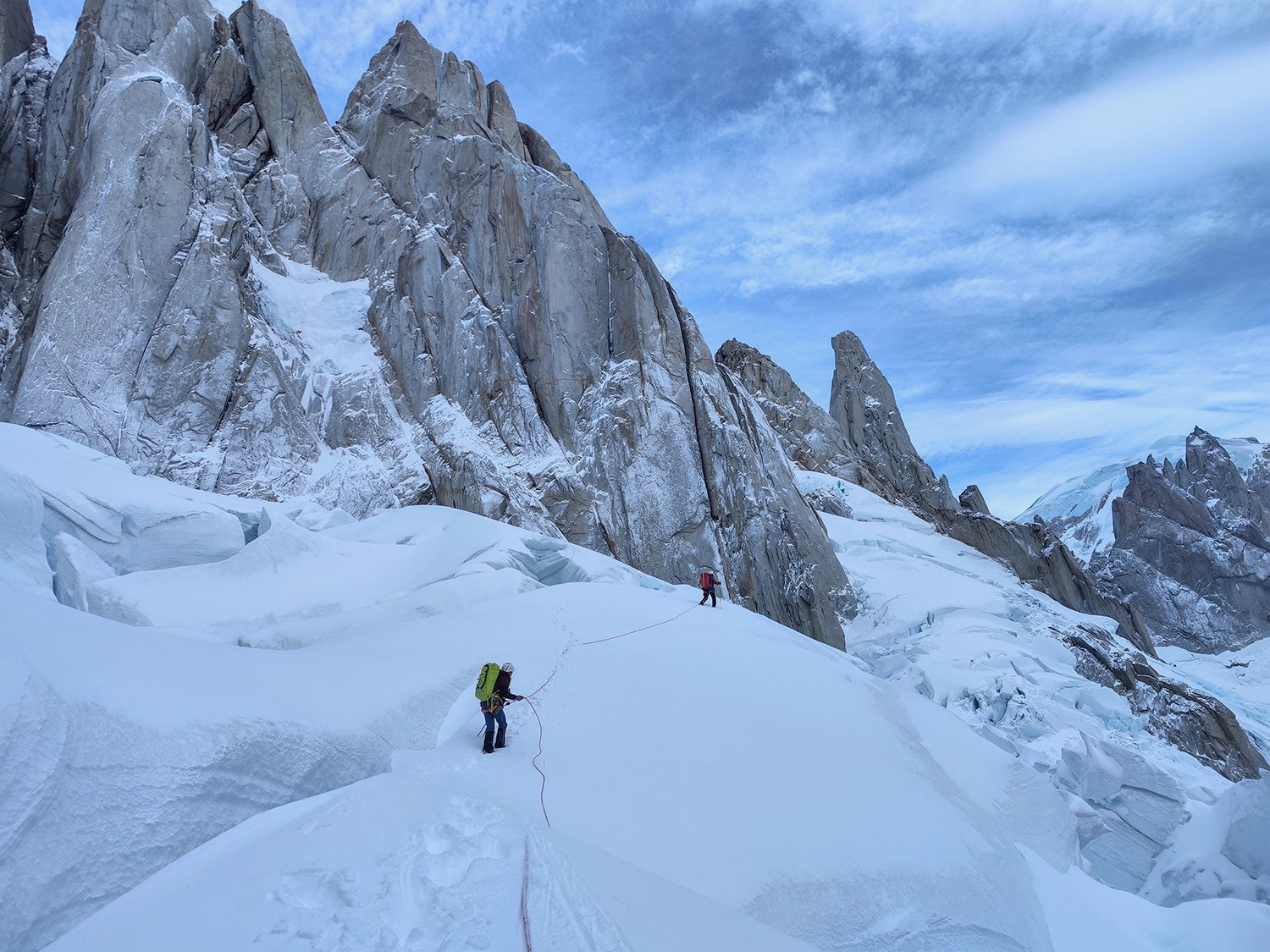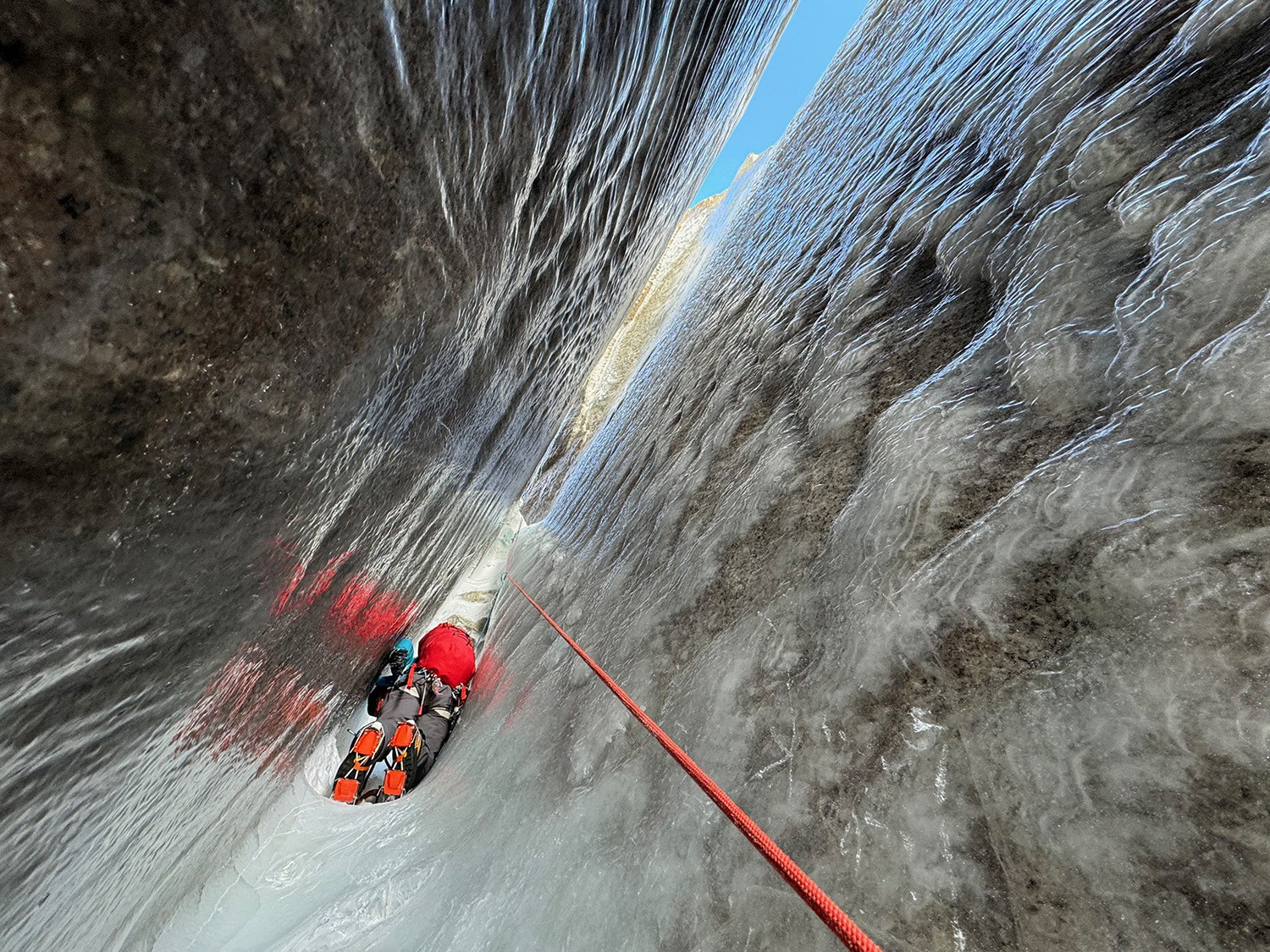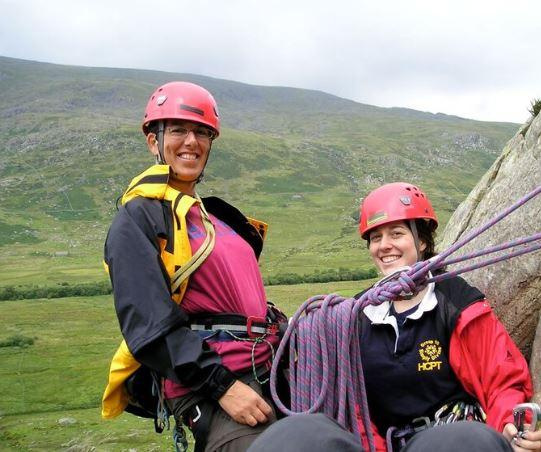
Lise Billon
Climber, alpinist, mountain guide and a supervisor of the FFME Women’s National Mountaineering Team. An adventurer at heart, she loves to push her limits by climbing the world’s highest peaks in Patagonia, Alaska, Karakoram. An insatiable climber and traveler, she inspires other climbers with her passion and love for the mountains.

Maud Vanpoulle
Mountain guide, traveler, alpinist, skier and also a social sciences researcher on
risks in her sports. What she loves the most is to go on long, adventurous
trips on mountains far away or close to home. The important is to enjoy the
journey mountains always take us through!
Originally from the countryside near Lyon, she
moved closer to the mountains as soon as she could.

Fanny Schmutz
She was born in Chamonix, a place renowned for its breathtaking mountain vistas. Her journey into the world of climbing began at a young age, guided by her father, a seasoned mountain guide, who generously passed on his passion for the mountains to her.
Starting in the Alps, she quickly felt the irresistible urge to explore other mountain ranges
Filo Sureste route on Cerro Torre (3128 m, Patagonia)
- Difficult: 7a–7c, 5.11a, A2, WI4, UIAA VI, ED
- Elevation gain: 950 m
- Length of technical sections: 800 m
This wall has a lot of history, which includes Cesare Maestri using a gas-powered compressor drill to add bolts to 300-metre headwall of the southwest ridge and face in 1970. He did not reach the summit and left the compressor clipped to the last bolts. In 2012, Jason Kruk and Hayden Kennedy made the line of Filo Sureste and removed 120 bolts from the Compressor Route on their descent.
Billon, Schmutz and Vanpoulle’s ascent adds another page to the history books of one of the most famous mountains in the world. They are the first women’s rope team to have succeeded in repeating this historic route in Patagonia.
The girls completed the route in 3 days.

Fanny Schmutz, Maud Vanpoulle, and Lise Billon all came to El Chaltén for the first time around ten years ago. That was when they formulated a goal, a dream that they wanted to focus on: the southeast ridge on Cerro Torre. Their trips to Patagonia helped them a lot to get used to the range, the style of climbing, and the long waiting game in town. And finally, this year they felt more than ready to climb it.
Lise Billon:
Three of us
have been coming to El Chaltén numerous times. Personally, my first time was in
2012. I think Maud and I met in Patagonia in 2014, and Fanny has also been
coming here a lot. We all know each other from Chamonix, even though I met Maud
in Patagonia. Fanny and I did the mountain guide training together and started
traveling together. It’s not easy to find a female partner who is motivated for
expeditions at the same level as you. Little by little, we built our friendship
and trust in ourselves and our team to tackle bigger projects.
We know each other from Chamonix most of all, even though I met Maud in Patagonia. With Fanny we did the mountain guide together, we started travelling together. It’s not so easy to find a female partner, motivated for expeditions with the same level as you. Little by little we built our friendship, that trust to go, the trust on ourselves, the trust on the team to go on bigger projects.
We went to Patagonia last year already, in 2023. Didn’t very get lucky with the weather. We managed to climb cool things, but in regard of what means success, we didn’t really succeed in 2023 because we reached no summit. But had a great time, and that fortified our experience together.
We came at Tissier, spent a long amount of time waiting. Like, none of the forecast windows were good enough. Just before leaving– our return flight was coming closer and closer– and not seeing any window. It’s a bit stressful and a bit disappointing, of course. And suddenly the window appeared, and we went off. We took off from El Chaltén and started walking on the first day, 22th of February. We walked, and it was raining, so we really questioned our objective, because why walking when there’s the rain and the wind? We saw the mountain and it was all snowy when I’s supposed to be mainly rock. So, we really had doubts on the approach walk. We slept in Nipo Nino that evening, on 22th, and we decided to stuck in Nipo Nino because we had a stash, also, it wasn’t so good weather, and we thought it would be more comfortable here. On the next day, we went to Col de Paciencia. It was very snowy. We saw many pictures on ice, bunch of people, and we thought it would be easy access region, and easy to rain. It was not at all. We had to set up track, obviously, because we were setting up track, some other party sticked to us, they managed to join us on that climb, and we arrived at Col de Paciencia quite late, much later than we expected because of that snow and set up camp. It was very windy that evening, and we saw the first pitches for the next day.
Very snowy, the head wall was very frozen. Again, we were questioning if we would manage to do it. I think, it’s the main line of accent: we were climbing in the doubt till the end. We were suer we would make it to the top after we climbed two pitches on the head wall. And we were under the two last pitches and we were like: “OK, we gonna go to the summit no matter what”. But before that point we were full of doubts.
Because we were not certain of the success of the attempt, one of the party turned back the next morning. They thought it would not be possible and preferred to ensure they climbed something. We took some extra gear because when you arrive at pitch 16 or 17, I can’t remember exactly, you can escape via the corkscrew route. We were like: “OK, if the wall is too wet, we can still escape through the corkscrew because we grabbed some more gear.” But meanwhile, we climbed very carefully, seeking the ascent.





So, on Saturday, the 24th, we started climbing. I began the climb, and—well—I’m not a morning person, so I probably shouldn’t have started! It took me ages to get through the first two pitches. They were full of snow, and I had to clean all the cracks. It was cold and wet, and we kept checking on each other, like, “Where are we? Do we have the gear?” We were pushing because the weather was good. There was no reason to turn back, so we just kept going as long as we could.
As soon as the sun came up, it started melting the snow, making it a bit easier. It was less important for the rock to be very dry on the less steep sections. The first pitches were quite steep, so you want them a bit drier, but then it became more like mountainous terrain where you can scramble. You still have steeper pitches, but when we got back to them later in the day, the sun had already dried off the wall basically. It was still taking a bit more time, I think.
We passed what I think was a 6b pitch just before the bivouac. It might be the hardest pitch because it’s very mandatory—there are no bolts at all. You’re moving off on the rock ridge for 25 meters with no bolts or protection. It’s all smearing with your feet.

In Patagonia, you’re quite exposed, so you don’t want to fall. It’s a 6b slab—very mandatory. We passed that and reached the bivouac. We made it just below the ice tower, which was good because there was another party just ahead of us. They were moving much faster, doing short pitches, like in American style, El Capitan style. They passed us during the day and made it two pitches above us. It was good that we could stay on that ledge because there’s no room for two parties at the bivouac above.






On Sunday the 25th, we woke up in the morning and did the first mixed pitches. It’s mixed climbing above the bivouac, where you pass the mushroom. That’s where the real beauty of the route starts. You arrive at the base of the headwall, and there’s a 60-meter chimney to climb with ice at the end. It’s shoulder-wide, so you kind of get stuck while climbing it. Because the weather was very wet during our approach, the rock wall around us was covered with verglas instead of being dry. We saw some pictures, and it was just a line of ice, covered with proper verglas. It was very impressive to go through that. It was 60 meters, very steep, and not very comfortable. That led us to the base of the headwall.
At the base of the headwall, we knew the first two pitches were tricky. The first one is easy, but the second one is a 6c where you need to lay back on some very big flakes. You can place some gear behind the flakes, but if you fall, you might break the flakes, which is a bit sketchy. To be honest, I don’t think it’s a 6c, but the place and everything make it feel like a 6c. It’s a wet pitch, like it's raining water, so you’re putting your feet on a flat, wet wall. It’s a very impressive pitch, 60 meters long..



We were ready to the top of that one and then it was very obvious we would go– we were unstoppable, we looked at each other like “OK, we’re not to the top, we stay focused, but we gonna make it”. It was the only moment where we were sure of ourselves. We did the two of the pitches which are technically on the guidebooks the hardest ones. The climbing is a little bit different. The last pitches are really mandatory. It’s really mandatory and you don’t wanna fall. We made it to the summit around six on that Sunday. It was a special moment, I think, for the three of us, because– we like to say that individually, if you — Fanny would say, “Free of myself, we are never making it to the top,” and we could all say that. Maud could say that, I could say that. It’s the fact that we built our friendship throughout the year that made it possible. We are not inherently self-confident, but we managed to build that self-confidence together, and that pushed us to the top.



Then, obviously, we had to go down. We went back to the BV while it was still light. When we arrived at the BV spot, it was a very awful bivy spot; we barely managed to lie down, the three of us. It was slippery, with full exposure beneath us. We decided to stay there because we didn’t want to finish the rappel in the dark. The forecast said the weather would still be good the next day, but it ended up snowing quite a lot during the night. We were very happy to have a tent. We finished the rappel down a little bit in the mist. It cleared up a bit late in the morning, and by the beginning of the afternoon, we were already touching the ground and the glacier. We decided to go back to Chalten the same day, which was Monday evening. It was a long journey back to Chalten after such an exhausting route.

Women’s mountaineering around the world

Sasha DiGiulian and ‘Mango’ Ordonez have climbed the Sendero Luminoso route

Зимние Мунро Анны Уэллс

Самые значимые достижения в истории британского клуба «Pinnacle Club»

Совместные тренировки женщин в альпинизме

100 лет альпинистскому женскому клубу «Pinnacle Club»

Проект 100% Women и мировой женский рекорд

First Ascent of Sincronia — West Face of Cerro Steffen

2025 Nominee: Bhalu and a Biscuit. First ascent of the Point Walkers in the Satling Glacier, Garhwal Himalayas

Fay Manners. Solo Traverses in Garhwal Himalayas

2025 Nominee: Apollo-13. The First All-Female Ascent of the El Cohete, in Rio Turbio IV

Цараноро делает тебя сильнее уже тем, что ты туда идёшь

«Лемнос в облаках». Новая линия на Баффиновой Земле, Канада

«Тройная корона» Йосемити за сутки: первый женский рекорд

Правильное решение — это то, которое принимаешь в моменте

